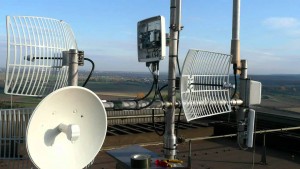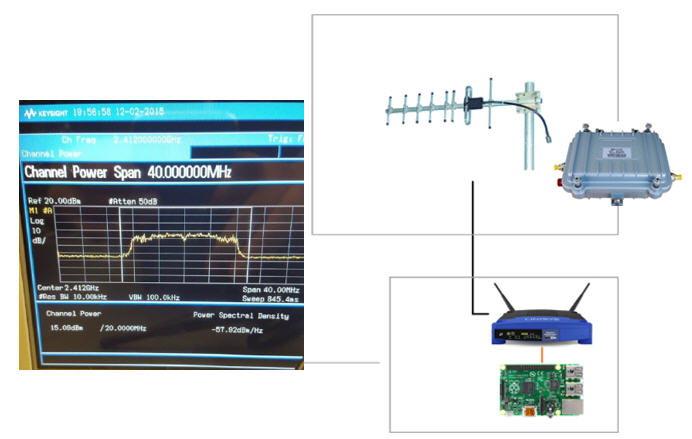Broadband-Hamnet (BBHM) is the implementation of ad-hoc wireless data networks over Amateur Radio frequencies using commercial off-the-shelf (COTS) such as IEEE 802.11 access points. Only licensed Amateur Radio operators can use transmitter power amplifiers (PA) and high gain antennas to increase the range of what is intended to be a local wireless connection under FCC Part 97 rules. BBHM communications can be used to assist in emergency communications and disaster relief operations and in addition to  experimentation and normal Amateur Radio communications.
experimentation and normal Amateur Radio communications.
BBHM is a 2015-2016 capstone Senior Design (SD) project of Robert Irwin KC3GIF, Tyler Oliveri KC3GIG and Devin Trejo KC3GIH which developed an improved Remote Machine Discovery Protocol for the organization of a self-organized mesh network. The 2.4 GHz WRT-54G wireless routers were modified to operated in the Amateur Radio allocation of that SHF band. With Amateur Radio a high power RF amplifier and Yagi antennas can be used to improve performance and range.

 The final Senior Design project Broadband-Hamnet Report can be obtained.
The final Senior Design project Broadband-Hamnet Report can be obtained.